Philips continues to fill my desk with monitors as of late. Joining the gang is the 322M8CZ, a 165Hz curved VA gaming display with a whooping 32″ diagonal screen size.
Unlike the previous models reviewed, the 322M8CZ doesn’t come with a boatload of features. It’s just a 1500R curved Full HD panel with the usual arsenal (strobing and adaptive sync). Really simple gaming display really – or is it?
Disclosure: Philips sent this unit as a return sample for the purpose of this review. The company did not ask me to say anything particular about it. All thoughts and opinion are of course my own.
- Product Page: Philips Momentum 322M8CZ
- Price: $349 (MSRP, Australia)
- Release Date: Q4 2020
Technical Specifications
| Display | |
|---|---|
| Panel Size | 31.5″ |
| Aspect Ratio | 16:9 |
| Resolution | 1920×1080 |
| Refresh Rate | 165Hz |
| Adaptive Sync | AMD FreeSync |
| Pixel Density | 70PPI |
| Brightness | 250cd/㎡ (Typical) |
| Contrast Ratio | 3000:1 (Typical) |
| Panel Type | VA |
| Response Time | 1ms (MPRT) |
| Color Space | NTSC 105%, sRGB 122% |
| Color Depth | — |
| Backlight | W-LED |
| Connectivity | |
| Display Options | 1x DisplayPort 1.4, 2x HDMI 2.0, 1x VGA |
| USB | — |
| Audio | 1x 3.5mm (Out) |
| Ergonomics | |
| VESA Mount | 100x100mm |
| Pivot | — |
| Swivel | — |
| Tilt | -5°/+20° |
| Lift | — |
| Anti-strain | LowBlue Mode |
| Dimensions | |
| Length | 709mm |
| Width | 88mm |
| Height | 425mm |
| Weight | 6.22kg (w/o stand) |
Packaging and Accessories
The Momentum 322M8CZ comes in the usual recycled cardboard box with a sandwich style inner packaging made out of polystyrene.
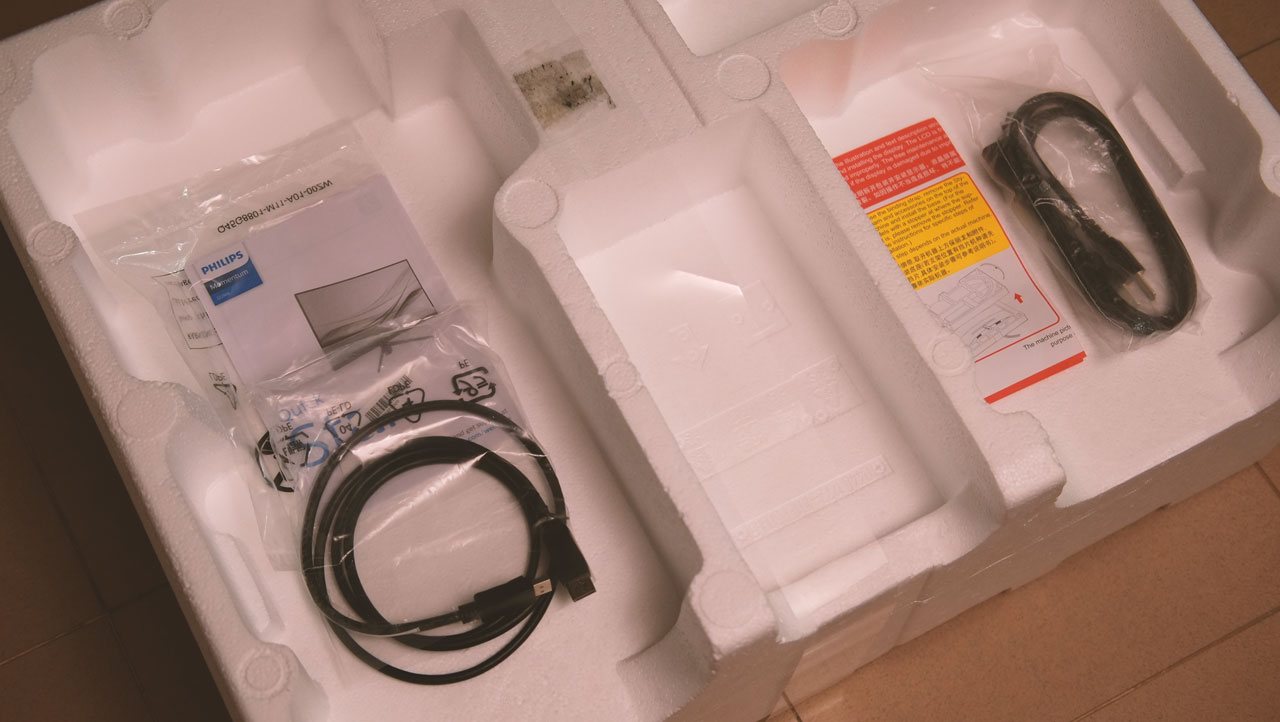
The packaging comes with the following items inside:
- Main unit with stand
- Power cable
-
DisplayPort Cable
- Manual
Lotsa free space here. Nothing much to see when it comes to the bundled accessories I guess.
Design, Build and Connectivity
Philips continues their current gaming monitor design philosophy with the 322M8CZ. This one is a simple looking display devoid of any edginess that otherwise plague the majority of gaming displays front and back.
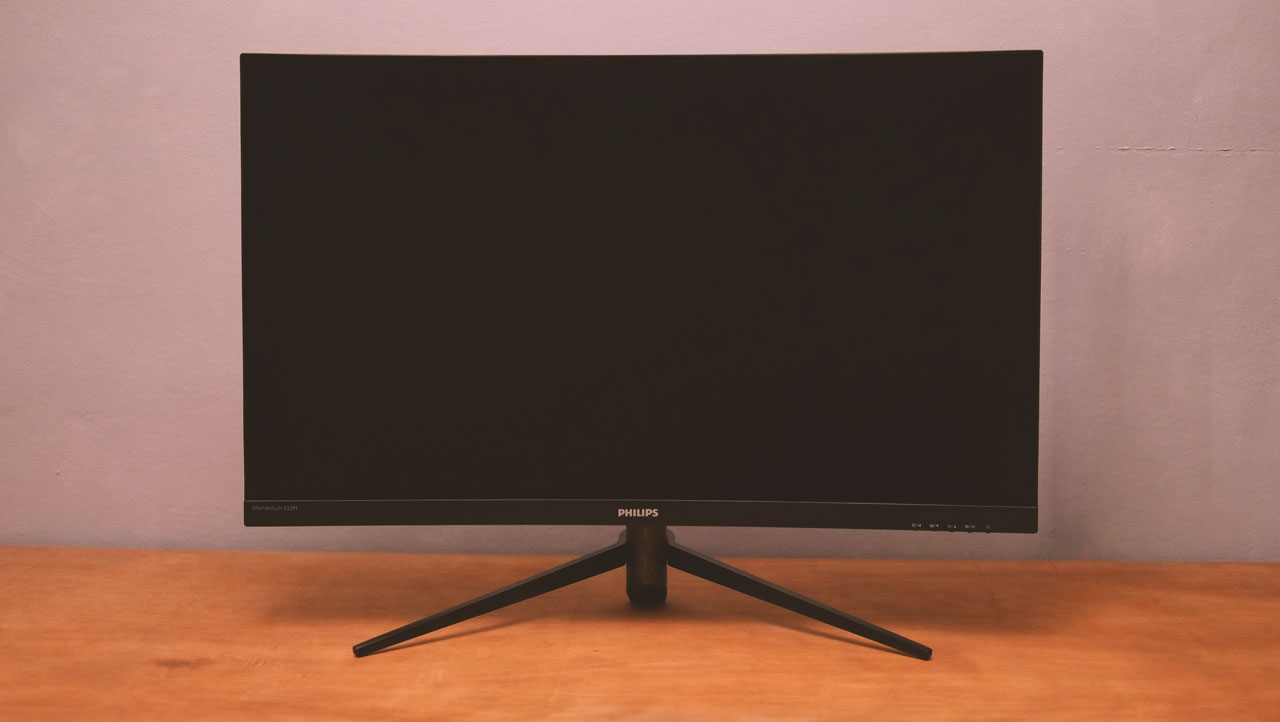
Back panel is plain simple though I do not like the use of faux brushed aluminum styling here. In Philips’ defense, this should help make the monitor to look a little bit fancier when it is situated in an open office environment.
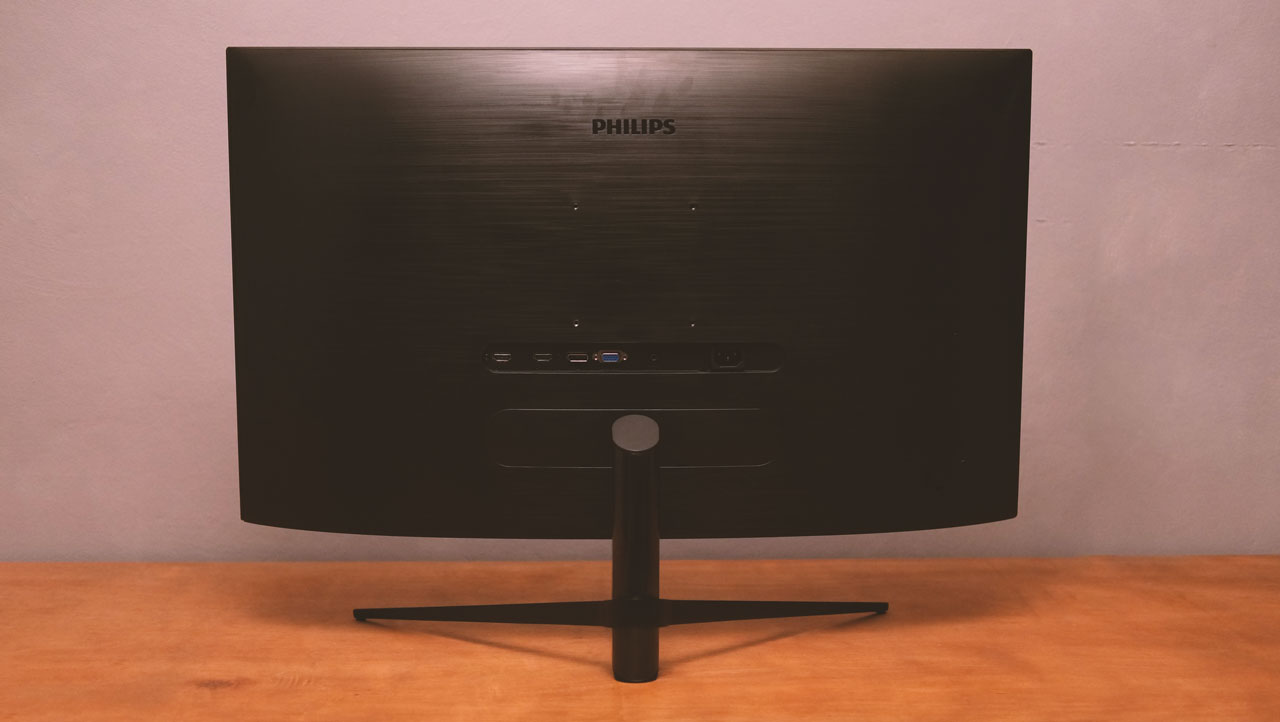
Speaking, connectivity options are decent. We have dual HDMI here along with a single DisplayPort and a VGA port. Not sure who would use a VGA port in this day and age – especially with its lack of bandwidth for 1080P 165Hz gaming. We also got a 3.5mm line-out here. VESA mount on the other hand is situated near the ports so make sure you get a slim one, possibly with spacers so it wont hinder the cables.
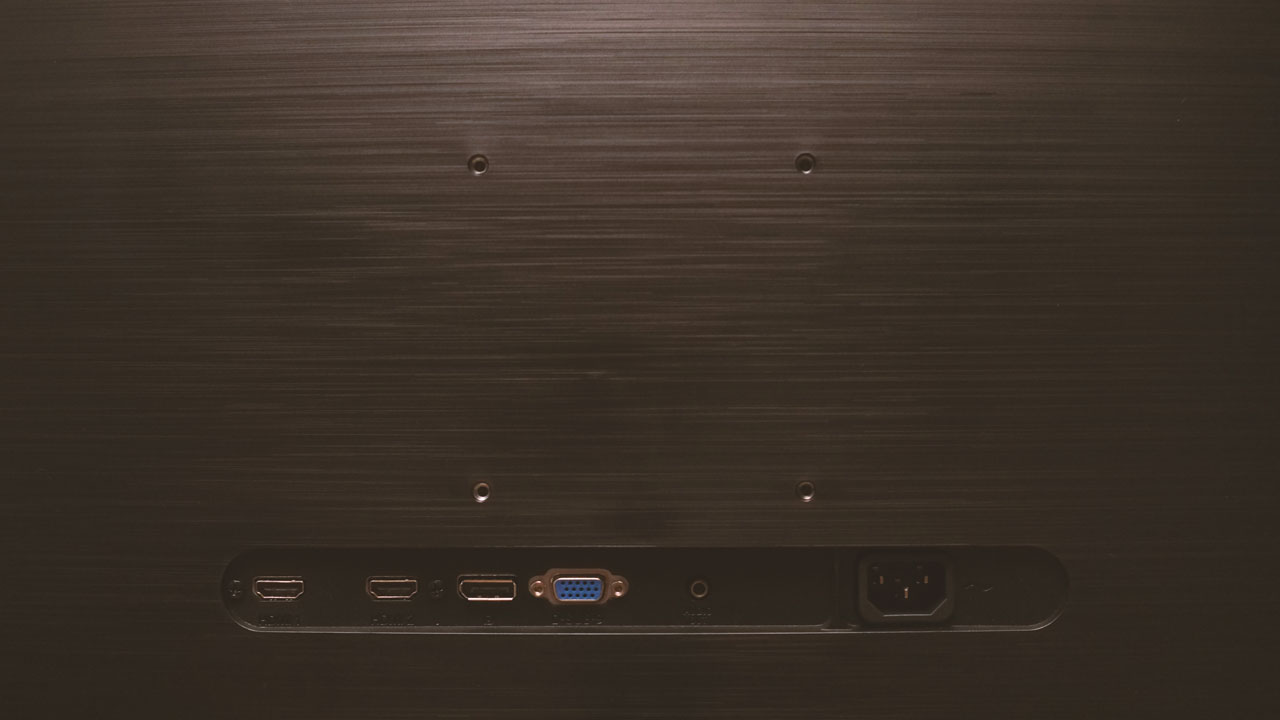
There is a provision for a speaker beneath the display but ours doesn’t even come with any. This will most likely depend on the region. I’ve seen online brochures with even a 240Hz panel.
OSD and Navigation
Philips went with a more standard button oriented navigation for the 322M8CZ. While I don’t hate this approach, joystick is the far superior way to go.
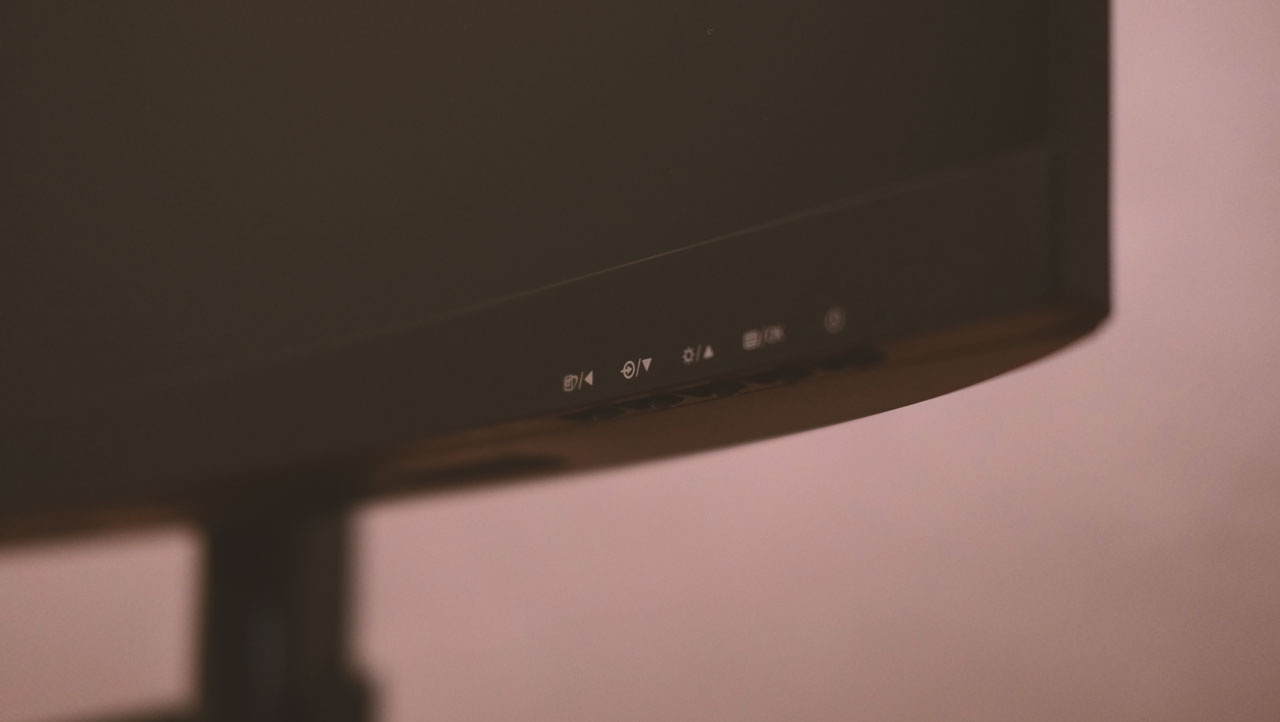
Now the OSD itself comes with tons of menus but there are only few that we want to check out here. These are the Picture and Color menus.
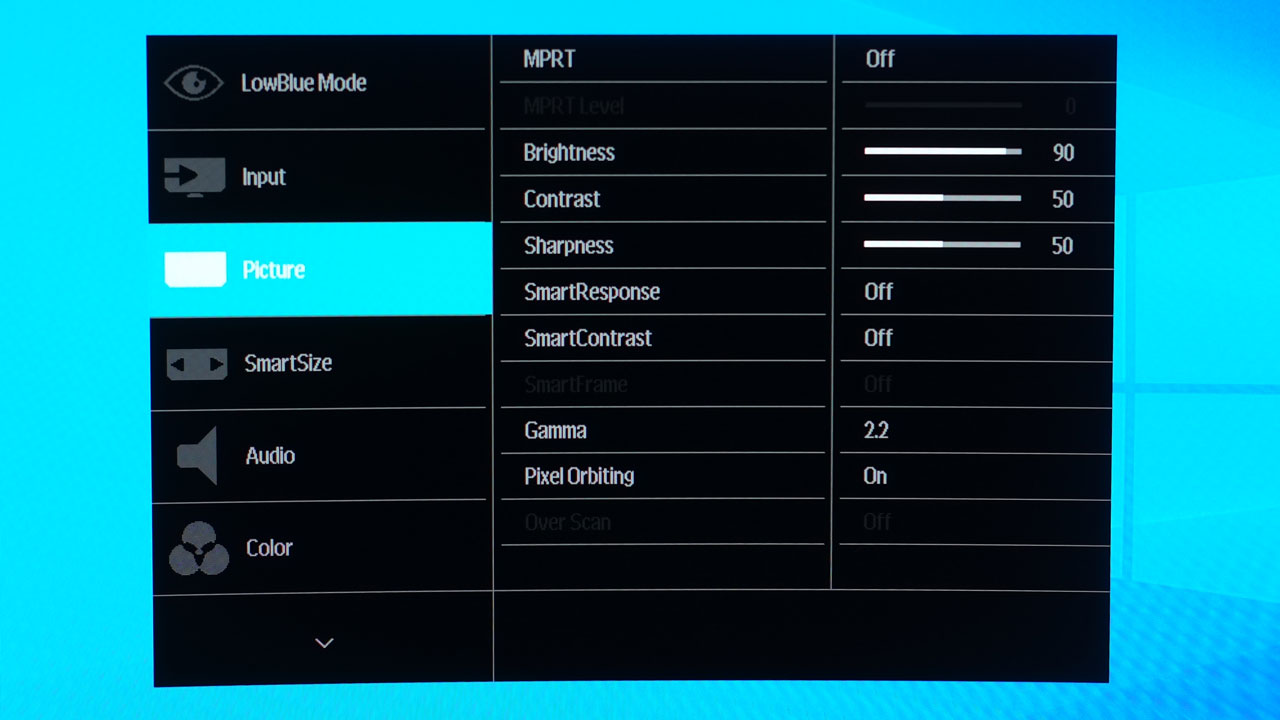
Picture is where most of the magic happens, featuring brightness contrast and the other basic stuff. MPRT is also found here, along with the Pixel Orbiting feature. There are also 5 levels of gamma settings here which is nice to see.
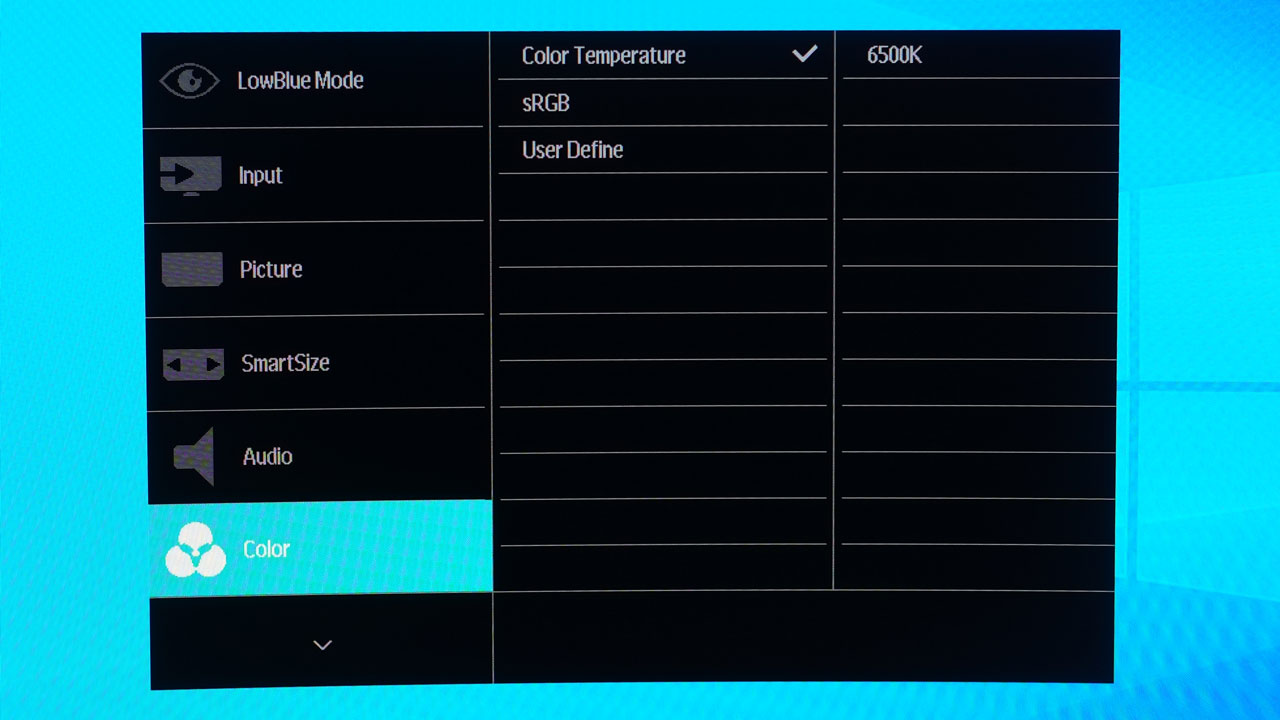
Color on the other hand has the color temperature options. You may use Kelvin based presets here or the usual user defined options. Other menus are self explanatory or weren’t exciting enough to warrant an explanation.
Ergonomics
The Philips Momentum 322M8CZ is a 32″ 1080P display, which puts it at a borderline decent PPI level of 70PPI. My desk for an instance is about 30″ deep and I had a hard time using this display at that level even with the help of its 1500R curvature. Now while it is stackable via the use of VESA mounts, the lower part of the display is significantly thicker compared to the rest – which is borderless.
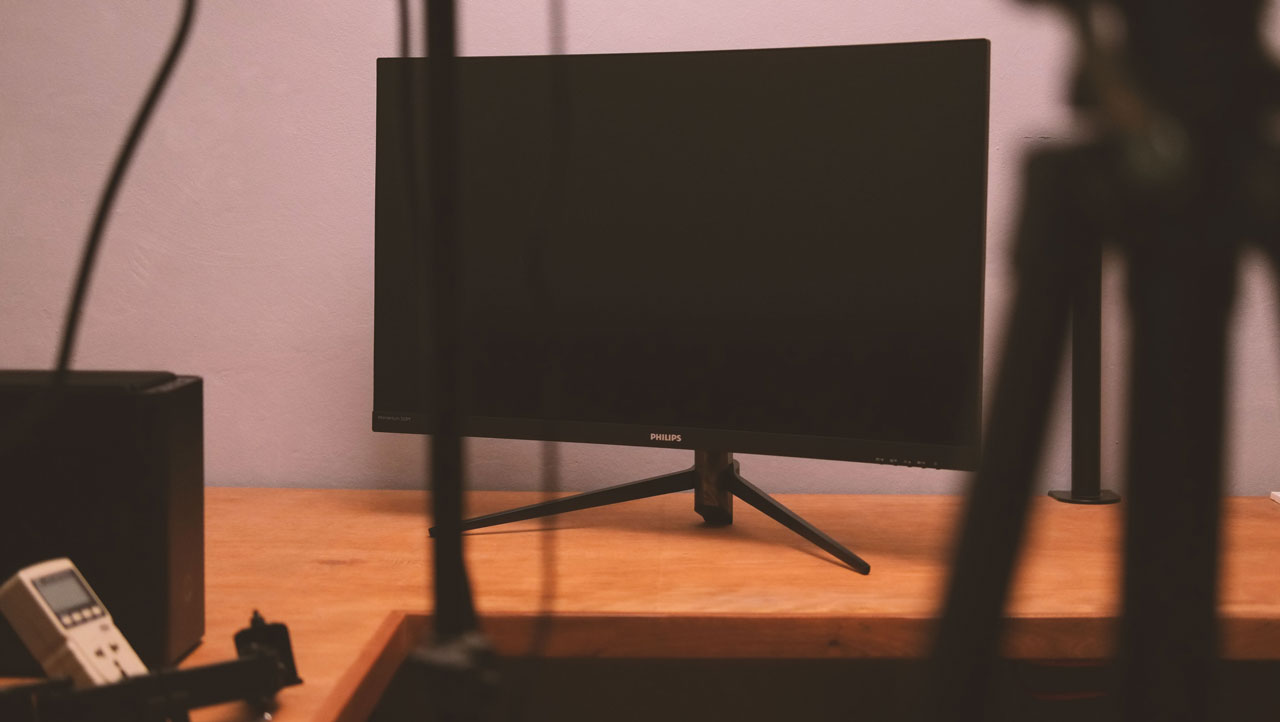
Philips used an anti-glare coating for this display though I find it just a notch glossier compared to the previous displays from Philips that I have tested. This could be due to the curvature of the display or a new coating material. Regardless, this is absolutely unnoticeable when turned on.

The 322M8CZ monitor supports a tiny amount of mechanical ergonomic features via its default stand mount. You could basically just tilt it upward and downward. For maximum ergonomics, I really suggest a VESA mounted solution.
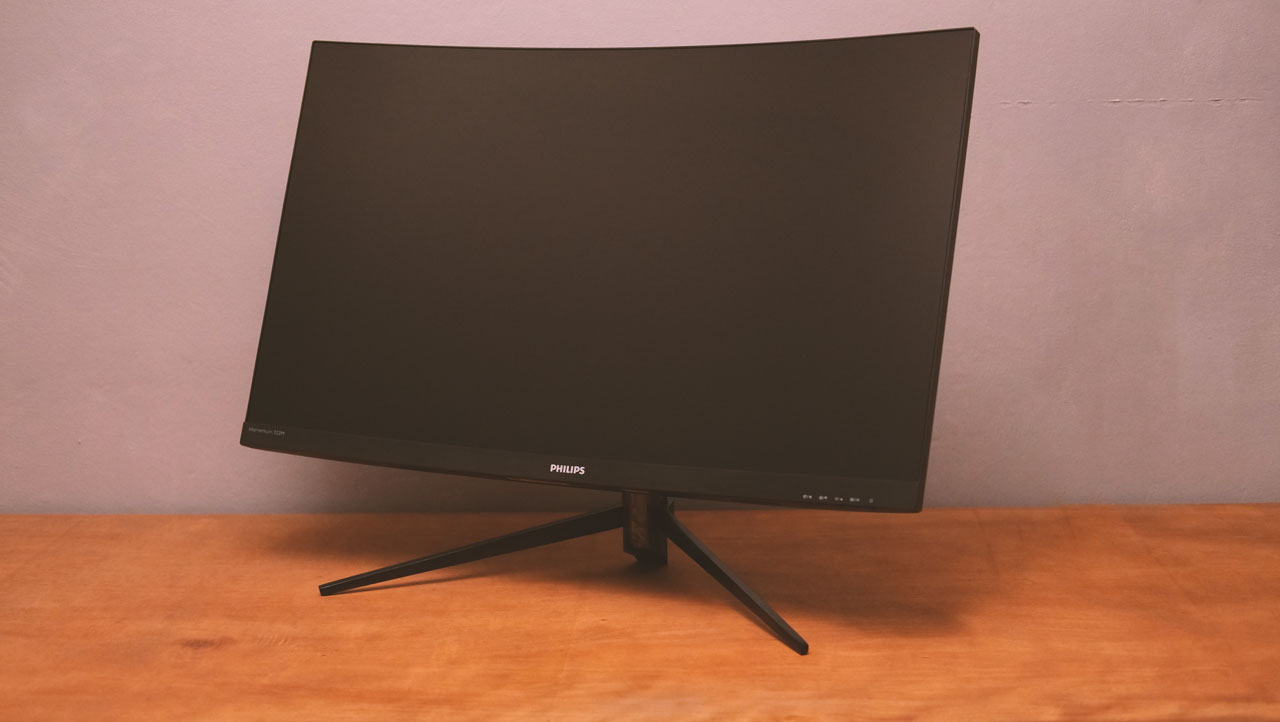
Aside from these ergonomic features, the monitor also comes with a LowBlue Mode. Basically its reading mode that is appropriate for reading texts.
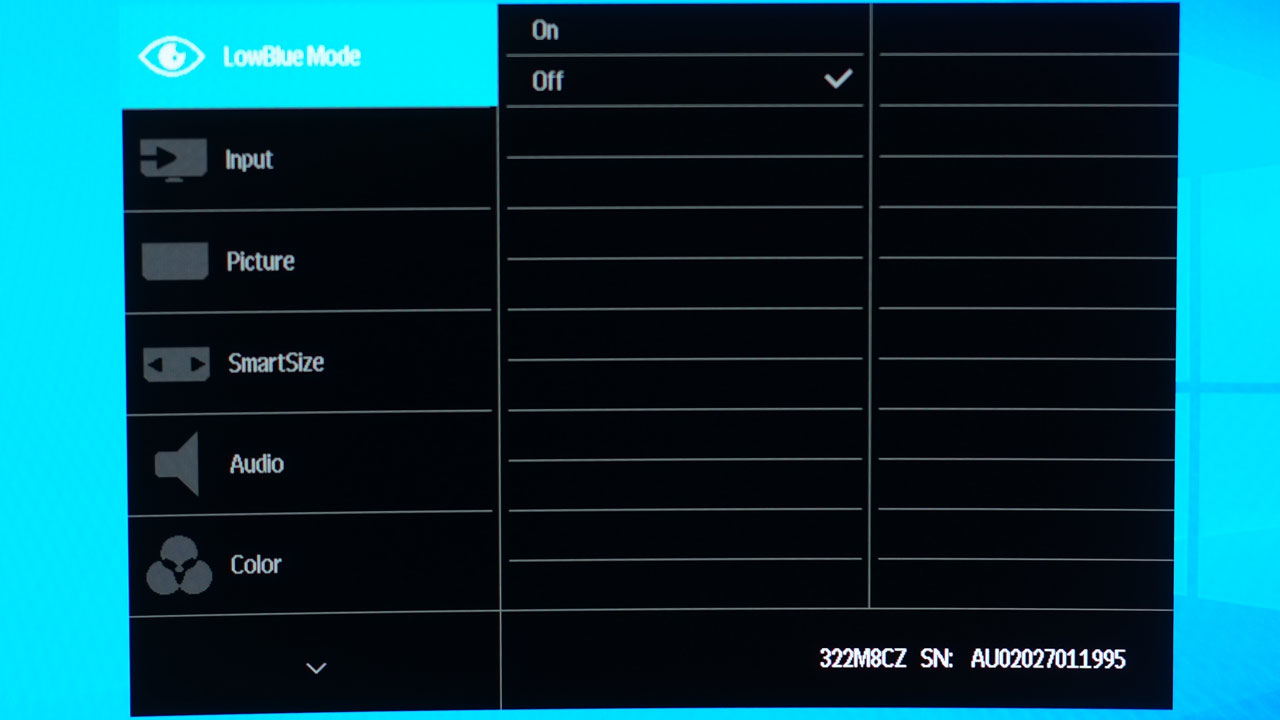
Now as for readability, I do not see any red flags here with BoW and WoB texts – unless pixel orbiting kicks in. The low PPI level is something to watch out though so I really recommend you to get a deeper desk.

Test Setup and Methodology
Our test setup relies on the measurements taken from the Data Color Spyder5ELITE display calibration system and Time Sleuth latency testing device. It is important to note that we are testing the review sample after burn-in, with at least 24-hours of uptime. This is done so to negate the FOTB (fresh out the box) state of the DUT (device under test), yielding better benchmarking consistency.
| Test System Specifications | |
|---|---|
| CPU | AMD Ryzen 5 3600 |
| Motherboard | ASUS ROG STRIX B550-I Gaming |
| Cooler | Noctua NH-U12S Redux |
| Memory | ADATA Premier 2666MHz 16GB |
| GPU | ASUS Phoenix GTX 1660 SUPER 6GB |
| Storage | Plextor M9PE NVME 512GB |
| Case | Mechanical Library JXK-K3 |
| PSU | Thermaltake Toughpower GF1 650W |
| Display | LG UF680T |
| OS | Microsoft Windows 10 Pro 64-bit |
Target for calibration is a 2.2 Gamma value, with a White Point at 6500K and a Brightness value set at 120 cd/m2. Calibrated values are then analyzed with the Spyder5ELITE Display Analysis tool. The following OSD values are selected for the display calibration.
| OSD Settings | |
|---|---|
| Brightness | 35 |
| Contrast | 50 |
| Saturation | — |
| Temperature | 6500K |
| Gamma | 2.2 |
| Preset | Off |
If you wish to use the calibrated ICC profile taken from our Spyder5ELITE result, just send us a message. You may also read our guide on how to use ICC profiles.
Preset Analysis:
To start, the monitor is tested to check out the brightness, contrast and white point at different presets. This is to check what could be the nearest to our target for calibration.
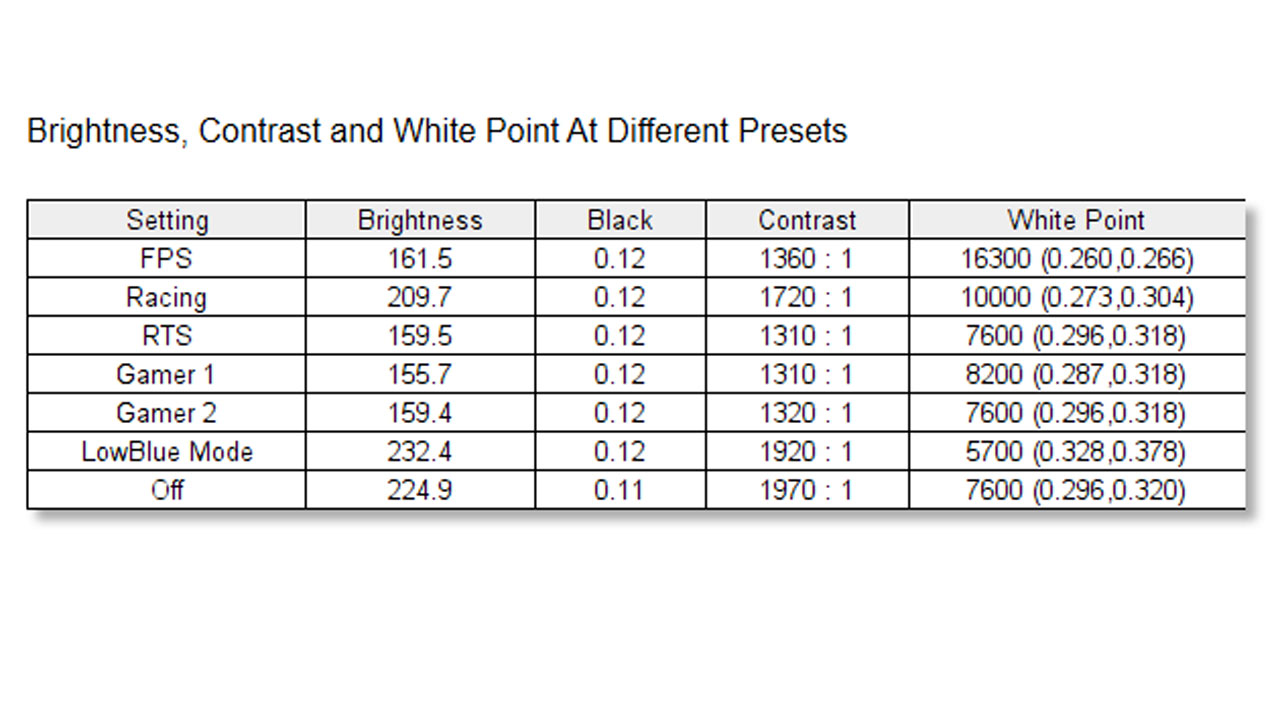
LowBlue Mode is the closest to our target (6500K) but not that close for actual use with its warm white point. Gamer 1 and 2 are actually the same but with user defined presets ready to get saved.
Color Gamut
The Color Gamut test evaluates the color space coverage of the display panel from industry standards including sRGB, AdobeRGB and DCI-P3. Higher percentage is better.
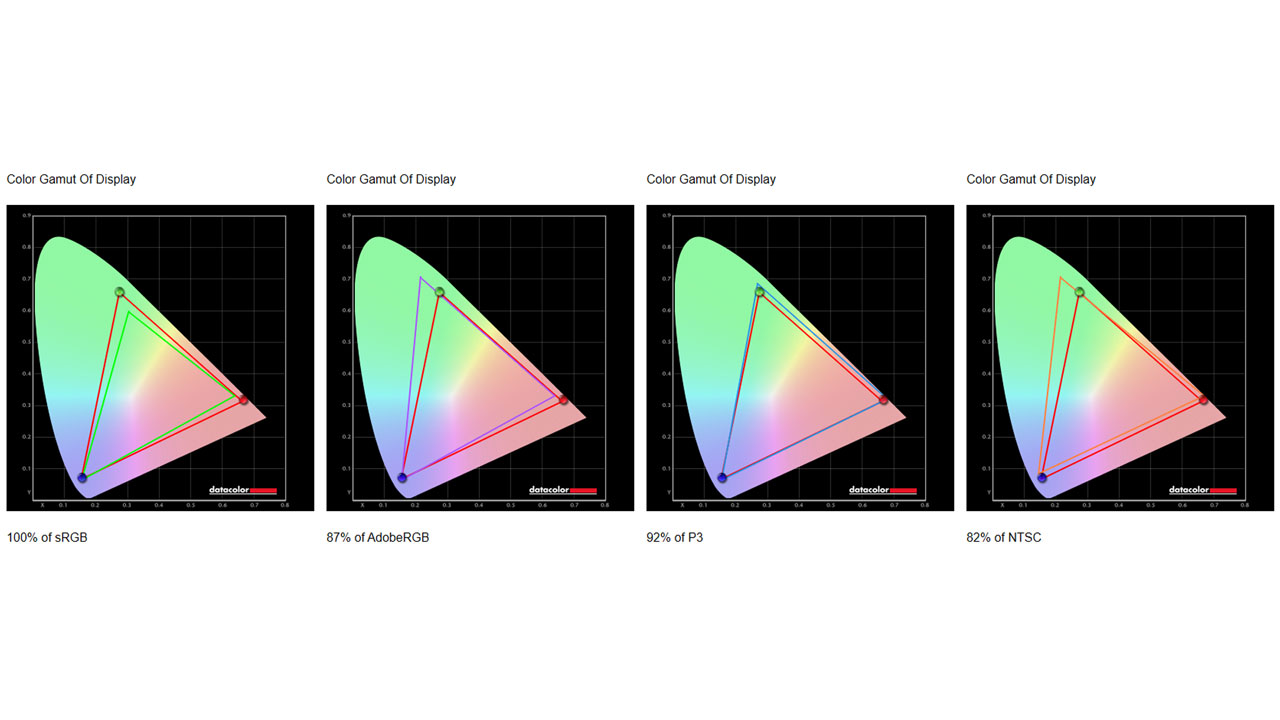
Color coverage is pretty good. We have 100% coverage for sRGB, 87% for AdobeRGB and 92% for DCI-P3.
Tone Response
Tone response is where we check the display panel’s gamma and presets if there are any. We then compare the results with the industry standard gamma levels. Closer to the standard value is better.
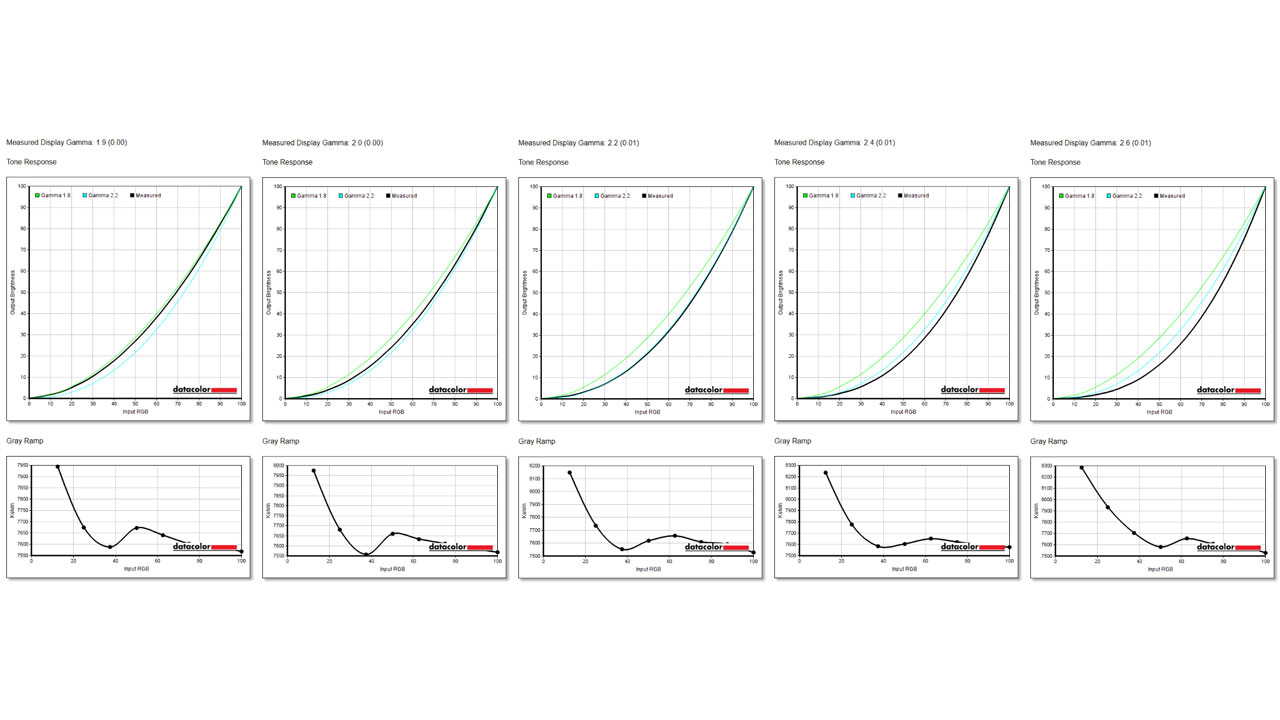
Apart from the 1.8 preset, everything else lines up well with the measurements made.
Brightness
The test here will shows us an overview on how the display performs at various brightness levels. This is measured in nits or candela per square meter (cd/m2). Higher is better.
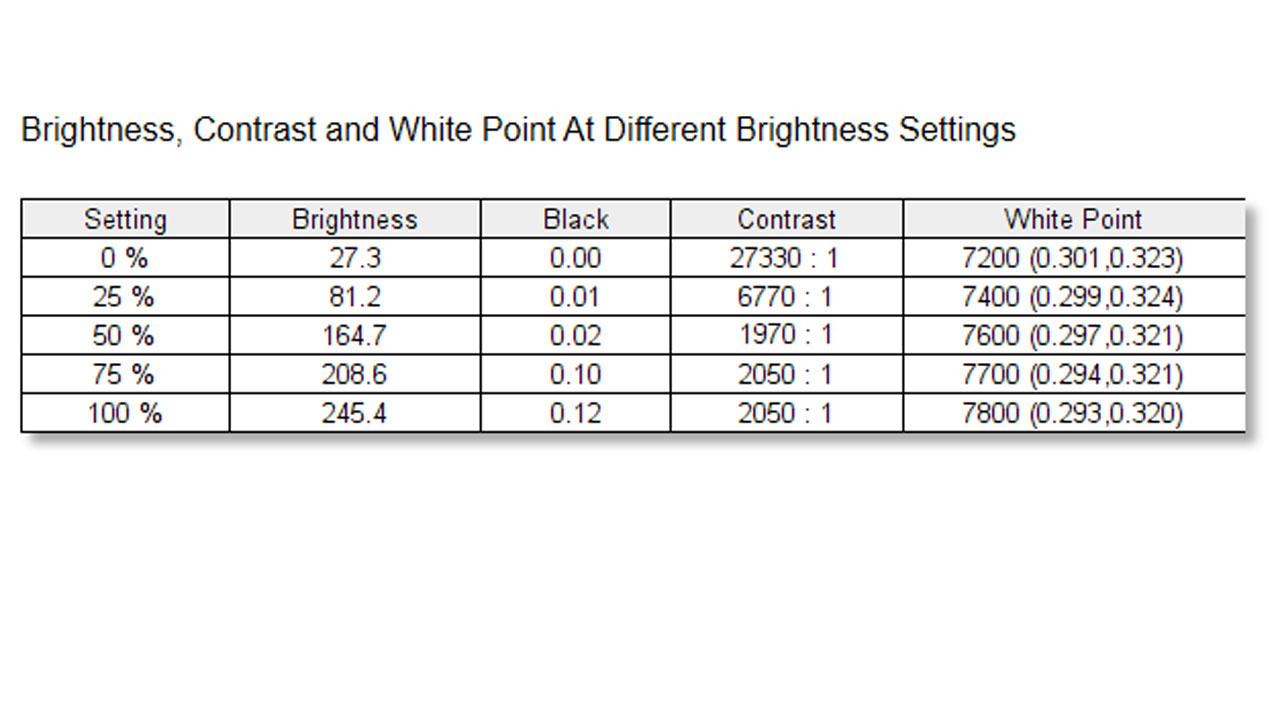
Peak brightness is rated at 245.4 cd/m2 which is a few candelas shy from the maximum brightness based on the specifications.
Contrast Ratio
Static contrast ratio is also tested. The test here will shows us how the display performs at varying contrast levels measured in luminance ratio. Higher is better.

Using the same results from the previous benchmark, we could see that we got a maximum contrast ratio of 2050:1 with the 322M8CZ. VA panels are really good at this over IPS panels in general so its performance here is no surprise.
Screen Uniformity
This test shows us an overview of the display panel’s color and luminance uniformity. The closer this value to 0, the better.
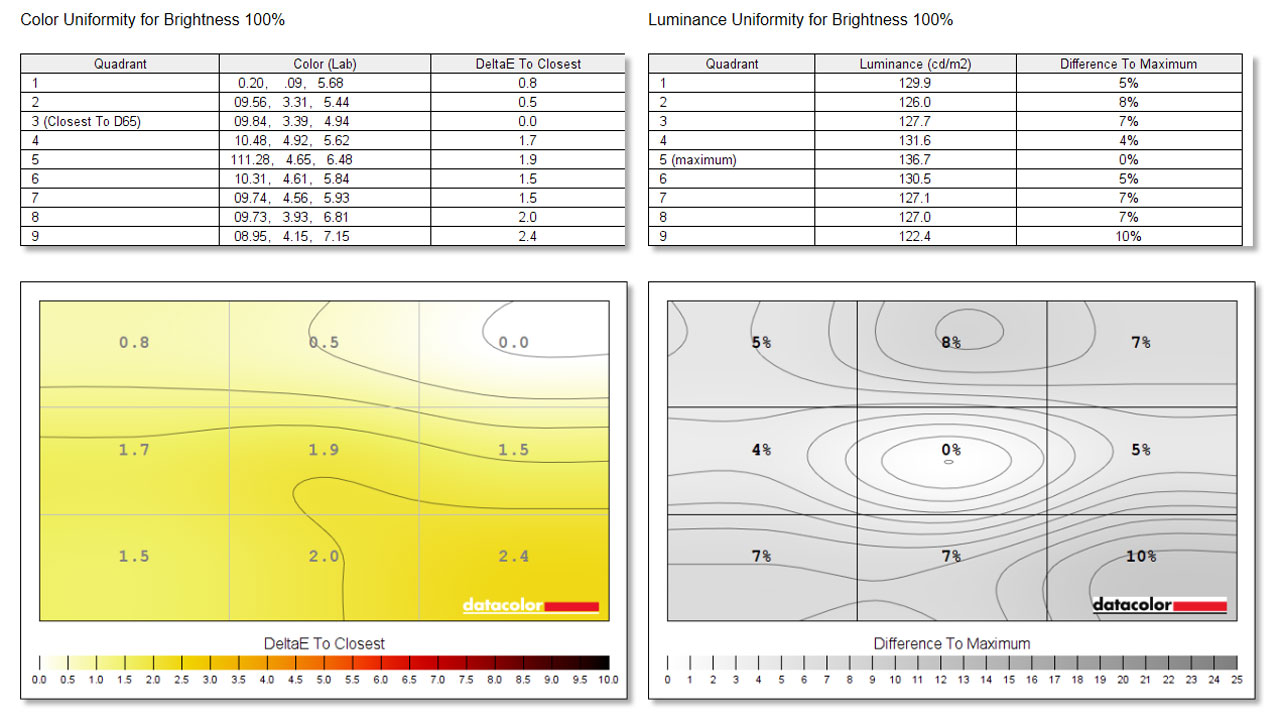
Color uniformity is pretty good, with a Delta-E average of 1.37. Luminance on the other hand is about 5.9% – with a maximum deviation of 10% at the lower right area of the panel.
Color Accuracy
The color accuracy test shows how different basic color hues are reproduced by the display panel. These color tones corresponds with the Datacolor SpyderCheckr. Lower Delta-E values are better.
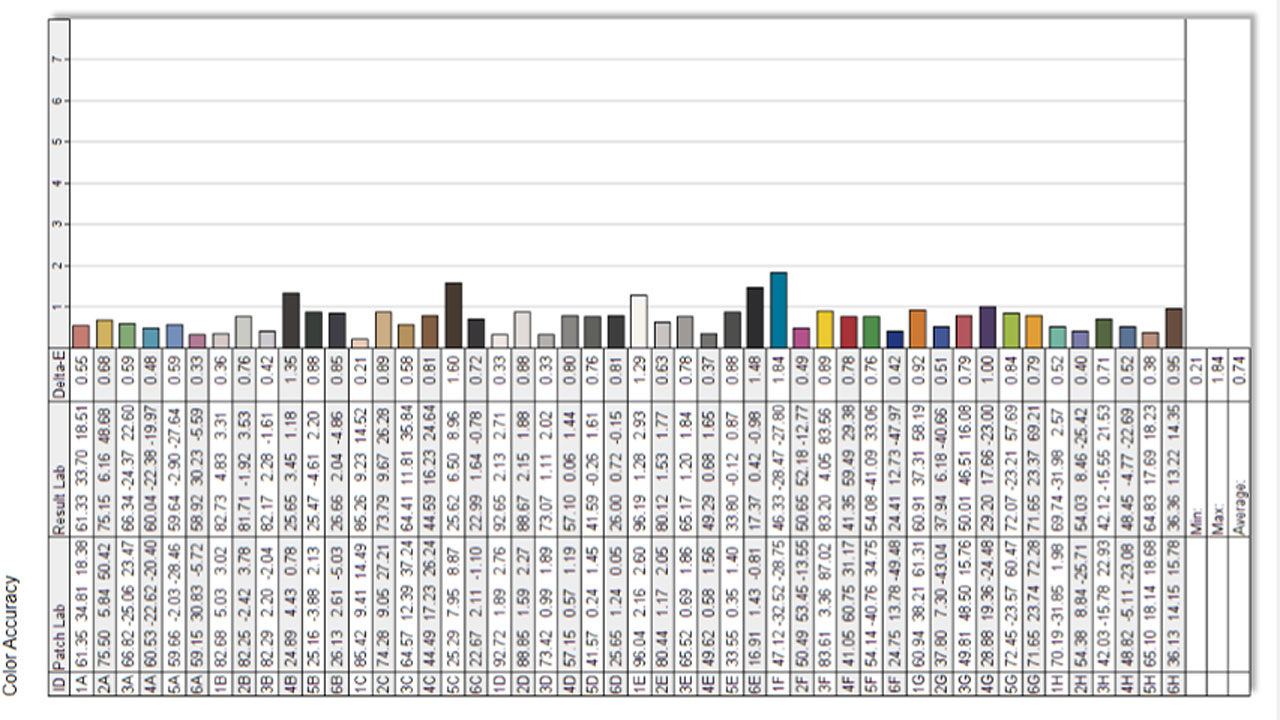
We got 0.74 Delta-E average for the color accuracy of the 322M8CZ. This is among the best I’ve tested.
Power Consumption
The power consumption at varying brightness and contrast levels is checked with a power meter. The lower the power consumption, the better.
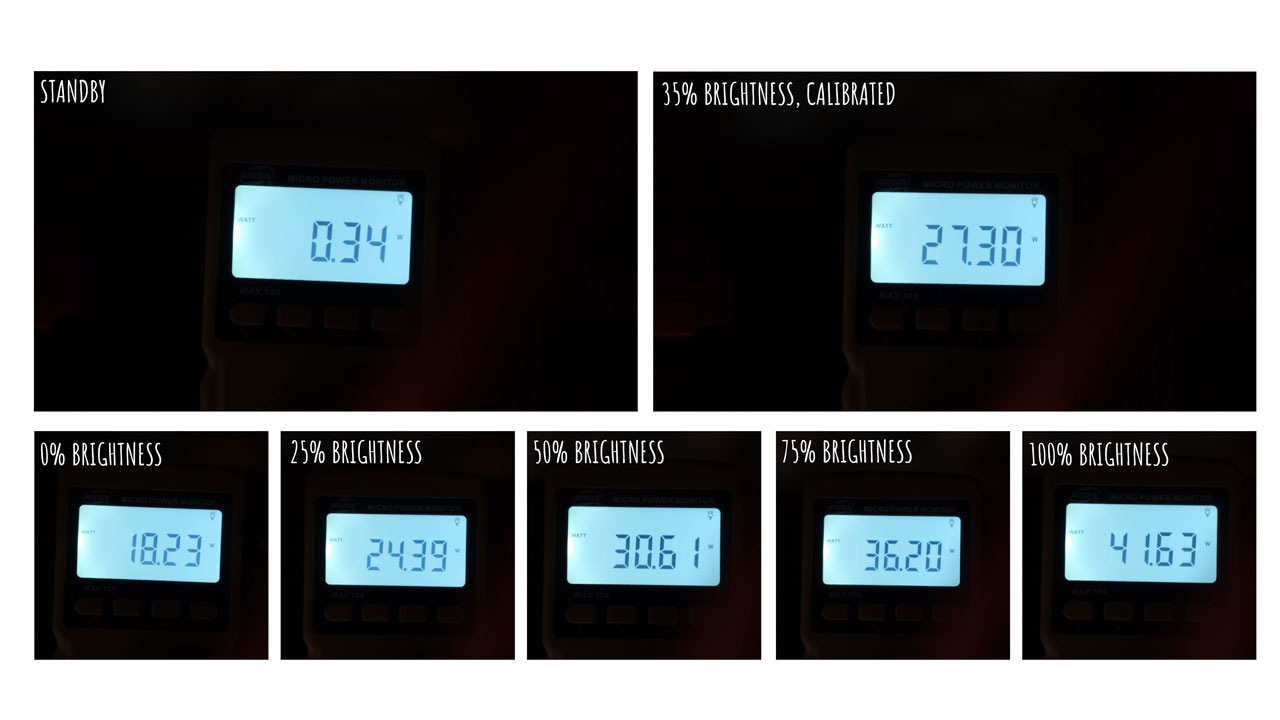
Power consumption is typical with its size and maximum brightness level. We actually got decent results here when it is calibrated and it doesn’t radiate heat much even though it’s practically a 32″ parabolic soft light from where I sit.
Display/Input Lag
Time Sleuth is the standalone video signal input lag testing device we use for display panel reviews. It works by sending a video output to the display panel via HDMI. A photodiode then converts the displayed signal, allowing us to measure both the input lag and response time of the display.
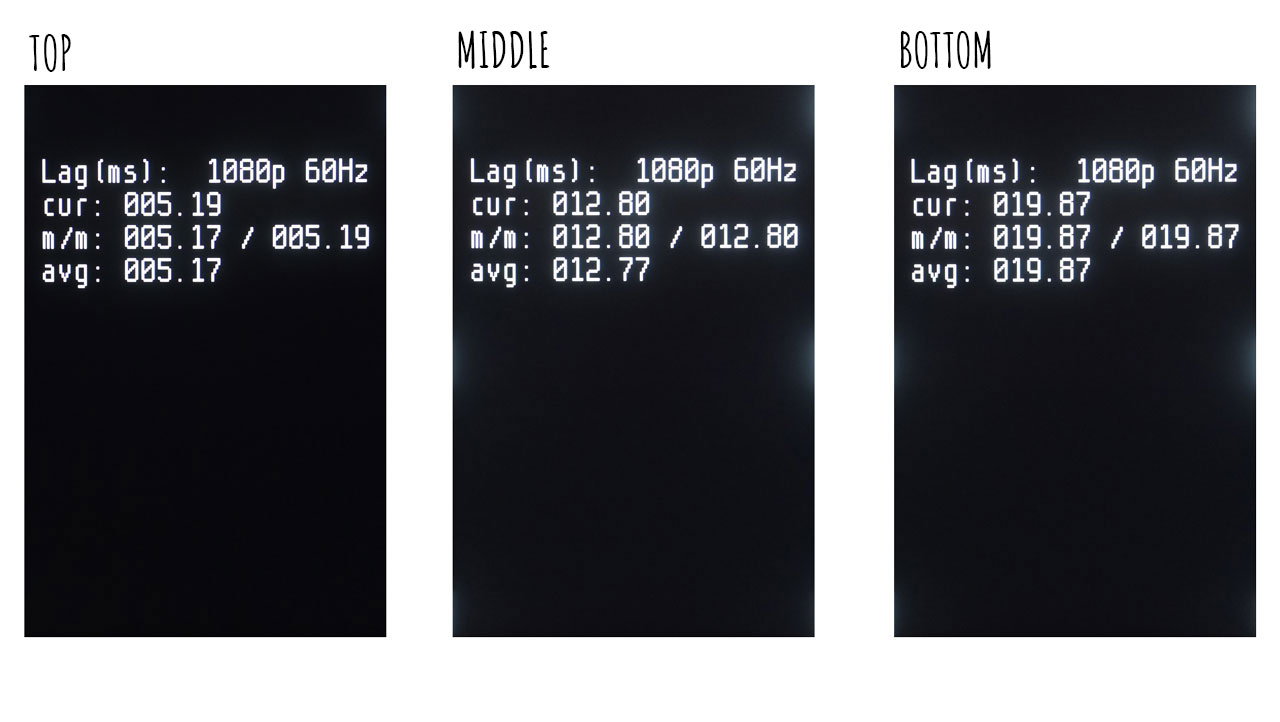
Average lag is measured at 5.17ms, 12.77ms and 19.87ms. Those are measurements from the top, middle and bottom part of the panel respectively.
Motion Clarity/Blur
Setting up a pursuit camera allows us to a great extent, perceive the actual motion clarity of the display. Using such method also allows us to check out motion artifacts including ghosting, inverse ghosting and motion blur. This pursuit camera test is a peer-reviewed invention.
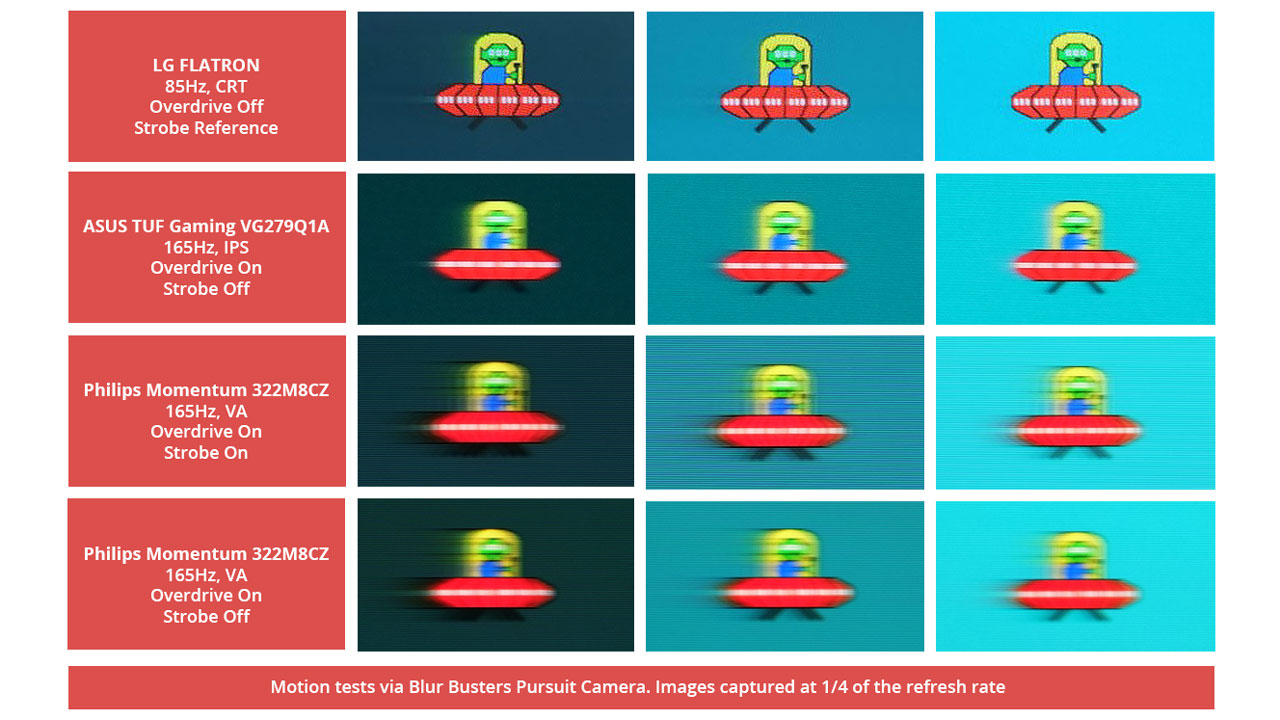
Motion clarity is decent for a 165Hz VA display but not as good as IPS nor TN panels at this area. Streaking and ghosting are present – even with MPRT enabled.
Back-light Bleed
Back-light Bleed is the phenomenon where back lighting from a display leaks. This is prevalent with displays where LEDs used to light the panel are situated at the edges of the display. Testing the back light of the display is conducted on a dim room, simulating the recognizable amount of bleed for such scenario.
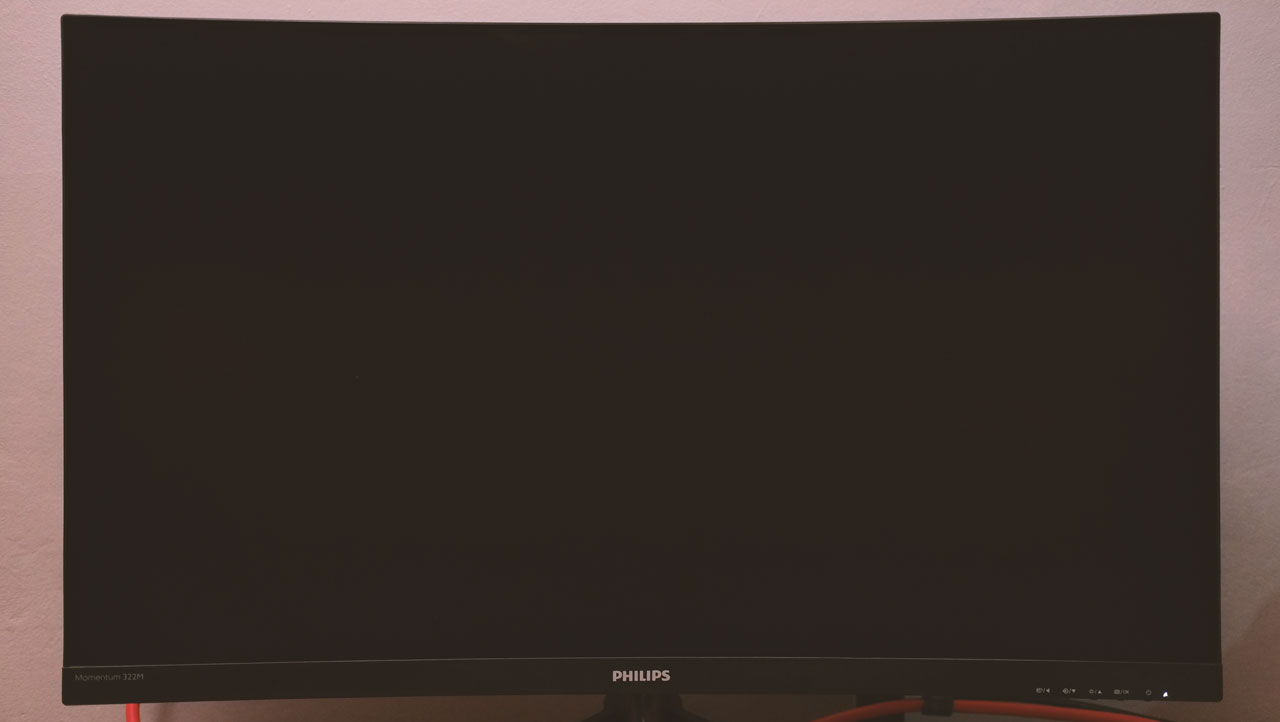
Back-light bleed is definitely unnoticeable here. Pitch black, all the way – like it’s not even turned on.
Viewing Angles
Viewing angles are also tested to check out how the display panel performs at different positions or eye levels. This should be helpful if you are looking for a panel that could be used on multi-monitor setups.
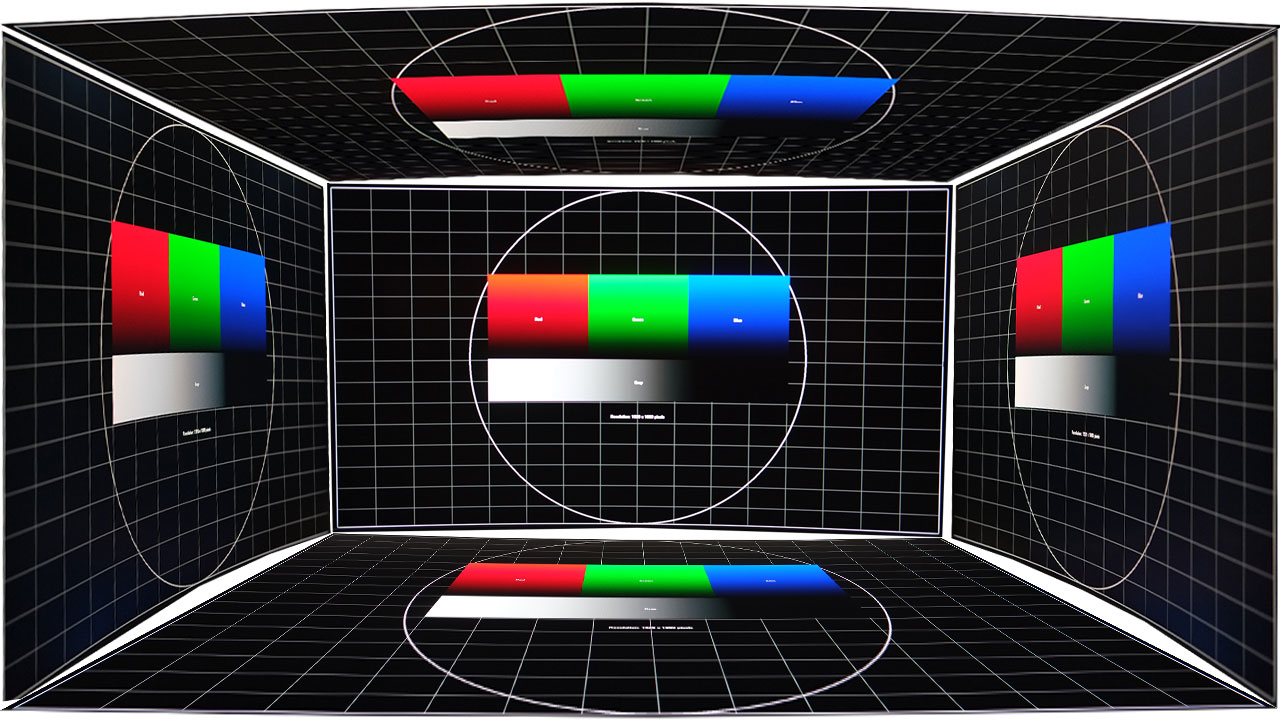
Viewing angles are excellent so do not mind the blue tint at the lower right edge of the panel and the warm white tint at the top of the lower image. Those are reflections from my lighting setup.
Frame Skipping
Frame Skipping is the phenomenon where dropped frames and missing refreshes occur due to ineffective refresh rate overclocking. We are are utilizing the Blur Busters Frame Skipping Checker to test if there is any. If your display exhibits such issues, it should be perceptually similar to in-game frame skipping.
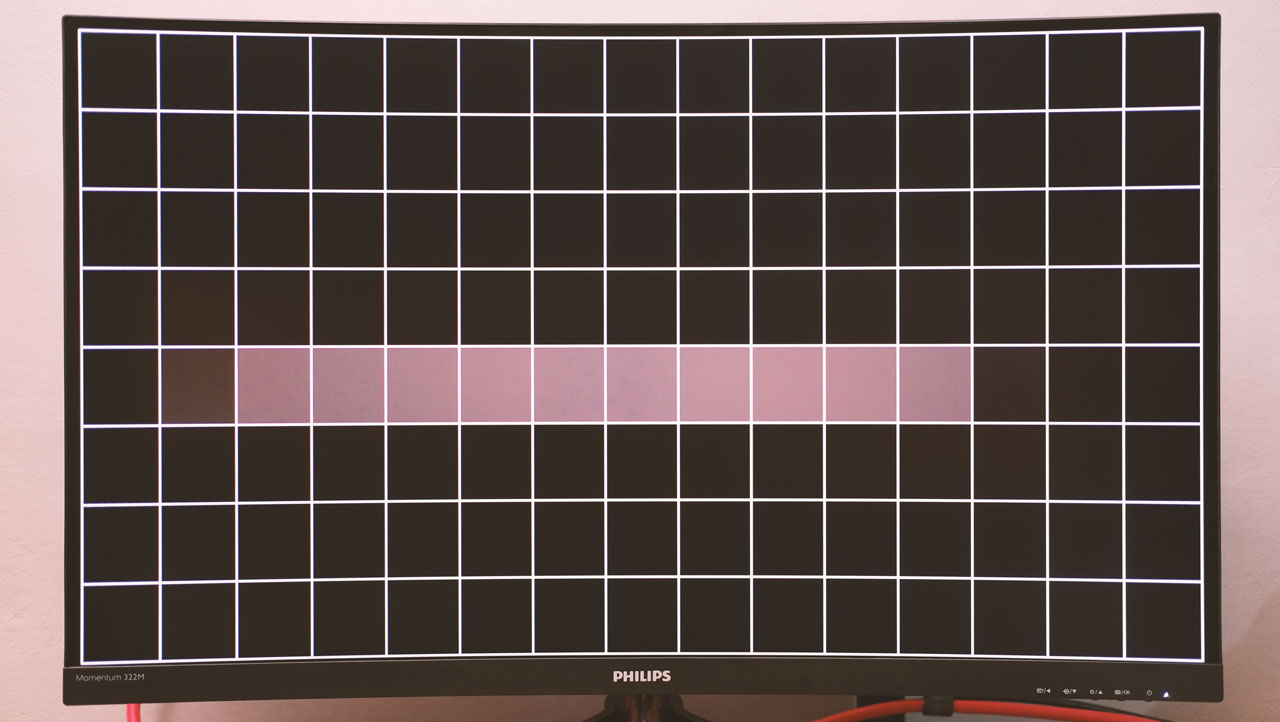
No evidence of frame skipping here at 165Hz.
Software, Lighting and Special Features
The Philips 322M8CZ doesn’t come with a software nor lighting features. What it does is a 1500R curvature panel that should, in theory, help alleviate eye strain.
Other than that, the monitor also comes with adaptive sync support via AMD FreeSync and backlight strobing.
Final Thoughts
The Philips 322M8CZ is a well performing VA panel with an excellent contrast ratio, color accuracy and a uniform panel. Gamma presets are also excellent – sans the 1.8 preset. Latency is also excellent which is proper for a gaming monitor.
Now while it showed mostly excellent results, this is still a television size Full HD VA panel. That said, if you could live by with the motion artifacts and its PPI level, it is still a good buy – especially for consoles where its size is a definite plus.
Now my problem with the 322M8CZ is actually its sibling: the Philips 322M8CP. That one is also a VA panel but with a notch better overall specifications – 240Hz, 4000:1 CR, 0.5ms MPRT and the list goes on. Price is about 20,780 Pesos MSRP – linked here.
In contrast, our unit comes with a $349 price point. No PHP values here since it’s not really available locally. Certainly, the 322M8CP looks better overall but both are great buys in my opinions. Want to save money? Go with the CZ. Want the best this form factor could offer that is also available locally? The CP is the way to go – unless it measured worst.
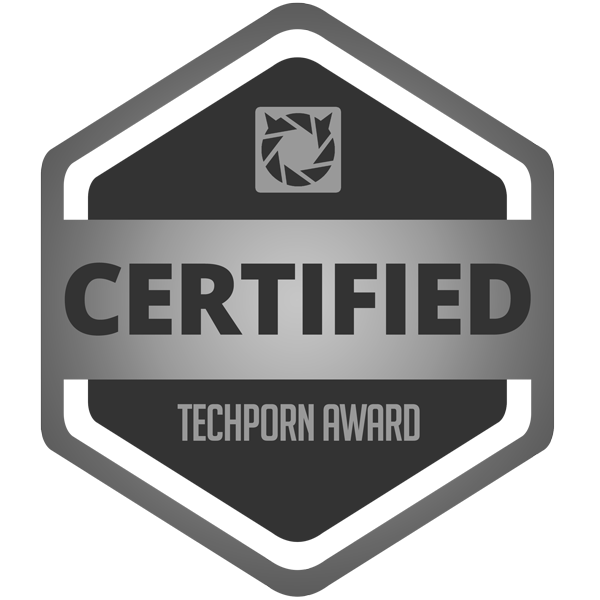
Philips Momentum 322M8CZ
-
Performance - 8/10
8/10
-
Build Quality - 8/10
8/10
-
Connectivity - 7/10
7/10
-
Ergonomics - 7/10
7/10
-
Features - 8/10
8/10
Summary
The Philips Momentum 322M8CZ is a good gaming monitor priced at $349 AU. For us PH folks, the 322M8CP is the obvious choice though.
Pros
- Decent color coverage
- Mostly excellent tone response
- Within spec peak brightness level
- Contrast ratio – expected for a VA panel
- Excellent color accuracy
Cons
- 240Hz model a bit more compelling purchase if you got the budget
- Comes with the usual VA panel artifacts
- Limited ergonomics